USA born Victor Nicholson is the grandson of Lt Colonel E Hills Nicholson and will be visiting Wokingham in March 2015.
Over the past few years, we have been in correspondence with a number of the descendants of Wokingham’s fallen and one of them is Victor Nicholson, the grandson of Lt Colonel E Hills Nicholson who was killed in the final weeks of World War One. The Hills Nicholson story as told below is not only tragic for the loss of all four brothers, but also that it happened to a family who were a major part of Wokingham life during the late Victorian / Edwardian period. During our correspondence, Victor informed us that he would like to donate his grandfather’s Great War diary to the Imperial War Museum and that he would like to do this in person.
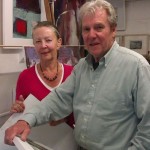
Nicholson Grand Daughter Jenny Woodhouse, will be meeting her cousin Victor for the first time. Photo here with partner David Moore; both are artists in St Ives Cornwall.
Such is the significance of this event that many people have rallied around to support the visit. We are also delighted to learn that his cousin, the artist Jenny Woodhouse, with whom he had lost contact will also be able to join him during his time in Wokingham. Here is the list of people who will be meeting Victor and helping him make the most of his visit to Wokingham; it is the first time he has been out of the USA:
Wokingham Mayor Martin Bishop. Martin will formally greet Victor and Jenny in the the magnificent Wokingham Town Hall. Anthony Richards Head of Documents and Sound (Imperial War Museum). Anthony will greet Victor at the Imperial War Museum and accept Lt Colonel E Hills Nicholson’s original war diary explaining how it will be kept under their care.
Andrew Lewis Curator Brooklands Museum. Andrew has arranged for a member of their specialist team to discuss its famous motor biking past. Victor wants to find out the history of a photograph of his father seated on a bike at Brooklands in the mid thirties.
Mike Read Presenter BBC Radio Berkshire. Mike and his producers at the BBC continue to support the Wokingham Remembers WW1 project and will be interviewing Victor on their programme Monday 2nd March at 2pm.
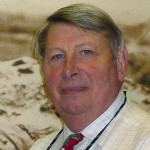
Major Bowes Crick will welcome Victor to the Fusiliers Museum. Three of the Hills Nicholson brothers were Fusiliers.
Major Colin Bowes-Crick, Curator London Fusiliers Museum. Colin will greet Victor at the Fusiliers Museum situated in the Tower of London. The three brothers who were killed, Edward, Walter and Bruce all fought for the Fusiliers during both the Boer and the Great Wars.
Jim Bell, author and Wokingham local historian. Jim wrote a detailed book on the famous families of Wokingham and included the Hills Nicholsons. He will accompany Jenny and Victor on a tour of their local parish.
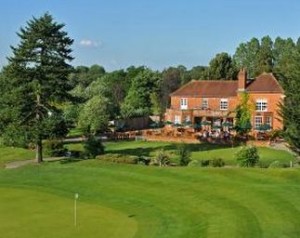
Evendons Manor farm was the home of Jenny’s grandparents the Coston family. It is now the Sand Martins Golf Club
Janet Firth, author and Barkham local historian. Janet has written a detailed article on John Francis Coston who owned the huge Evendon’s Manor and was Jenny’s Grandfather (he married Marjorie Hills Nicholson, sister to Edward, Bruce, Victor and Walter). Janet will take Jenny and Victor around what remains of the Manor (now a part of the Sand Martins Golf Club)
Suzanne Foster, Curator for Winchester College will show Victor where is grandfather attended following his preparatory education at the Towers School in Crowthorne. It will also be a chance to visit the cathedral where the old Saxon kings are entombed.
Kristian Jaggs, Estate Manager for Glebelands will greet both Victor and Jenny to the house which was built by their Great Grandfather, Alfred Nicholson in 1890.
Councillor Maurice Monk and director of the Cantley House Hotel. Prior to Cantley House becoming a hotel, it was once the home of the Nicholson family and of course Victor and Jenny will be staying here.
Maurice and the team at the hotel will be making sure their stay is extra special. (Maurice has been a constant supporter of the Wokingham Remembers project and is a gracious host for our history meetings.) Here is the amazing story of the Nicholson’s, a local family of whom we are all very proud:
THE HILLS NICHOLSON STORY
The Nicholson family have no Wokingham street or building named after them and have sunk below the consciousness of today’s local community. In the 1800’s however, they lived in what is now the Cantley House Hotel and they invested in large parts of Wokingham. It is also the tragedy of war which took away this family’s youngest generation. The Nicholson’s were wealthy, connected and self made; they were also destroyed by both World Wars. Local historian Jim Bell provides Wokingham Remembers with an excerpt from his book ‘Five Wokingham Families’:
‘Edward Nicholson and his wife, Sophia Hill, hailed from Northumberland. Son of William a butcher, and Margaret Nicholson, Edward was born in Hexham and she in North Shields. They had married in 1846 and, five years later, Sophia gave birth to Eliza Henrietta. In the following year she had a son, Alfred James. At that time Edward described himself as a draper. He must have been quite successful for they had two servants.
To understand how the Nicholson family moved from a butcher’s shop to owning large
parts of Wokingham we need to know of Frederick Walton, the inventor of linoleum. After all in the mid 1860’s Edward and Sophia moved south to Middlesex, probably to meet this gentleman. Born in 1838, Frederick Walton discovered the solidification of oil by oxidation. By adding ground cork, gums and resins he produced linoleum, which was a much improved floor covering than kamptulicon, which was expensive, unattractive and difficult to manufacture. He also introduced the manufacture of metallic flexible tubing to Britain. This was originally a French invention but Walton perfected it and rendered it practicable. The use of large diameters of this tubing proved of enormous value in the world’s oil fields and, in certain industries, superseded the use of India Rubber.
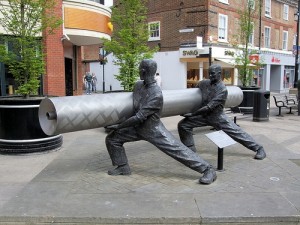
The lino factory is recognised as an important part of Staines heritage with this sculpture set in the High Street.
After his father refused to finance any more of his inventions, Walton took a distant relative as a partner who gave him a £1,000 loan, but that was soon used up. In desperation he advertised for a second investor and an unidentified ‘person from the north’ came forward, invested £3,000 in the project, and became the second partner. Walton and his two partners set up in business and formed The Linoleum Manufacturing Company which started production on June 4, 1864 in a converted mill at Staines, Middlesex.
At first sales were slow then the partners rented a shop in Newgate Street, London where they held a well-publicised linoleum exhibition. This was the turning point. The shop was continuously crowded with inquirers and the trade suddenly awakened to the fact that the public wanted linoleum.
The company flourished and expanded overseas in 1872 opening the American Linoleum Manufacturing Company with New York manufacturer Joseph Wild. The demand for linoleum grew quickly in North America and the factory’s Staten Island home base became a company town called Linoleumville. In England 19th century Staines became the major producer of linoleum and was a main employer in the Staines area until the 1960s.
It is possible that the above mentioned distant relative was James Walton, next door neighbour of the Nicholson family, according to the census of 1851. It is most likely that the second investor and unidentified person from the north, was Edward Nicholson himself because, at that time, Edward and Sophia were living in Northumberland. Moreover, in a speech given by Edward’s great grandson, Mr. Edward Nicholson Barran at the 82nd ordinary general meeting of Barry & Staines Linoleum Limited held in July 1946, Edward was identified as being one of the founders of the Linoleum Manufacturing Company. At the time of his early death in 1885 Edward was a director of the company.
In addition, according to the census of 1861, Edward and Sophia were boarders at Thavies Inn in Middlesex and Edward was no longer a draper describing himself instead as a fund holder. The census of 1871 states that Edward was residing at No. 14 Montague Villas, Richmond describing himself as a floor cloth manufacturer. Sophia, meanwhile was staying in Leeds with their daughter, Eliza Henrietta who had married John Barran, son of Sir John Barran, 1st Bart. founder of John Barran and Sons, clothing manufacturers; J.P. and Mayor of Leeds.
Having made his fortune in linoleum Edward retired and purchased Matthews Green Estate in 1877 from Captain Elliott Morres. The property was advertised in The Times as—
BERKS—The attractive Freehold Residential Estate known as Matthew’s Green, Wokingham, including a capital house with pleasure grounds, stabling, farmery, three cottages and very picturesque well- timbered, park-size land, in all about 70 acres.
In 1880 he rebuilt the western end of the 17th century Matthews Green House which became the family home. It is now known as Cantley House Hotel. Around that time he also purchased Wiltshire Farm.
Edward soon became well-known and respected in Embrook and Wokingham and took an active part in local politics as an ardent Liberal. He was instrumental in starting the Working Men’s Club at Embrook in 1884. Sophia was an active member of St. Paul’s Parish Church and regularly helped to organise Mothers’ Meetings and other entertainments at Embrook Mission Room.
While hunting in December 1884 Edward had a serious accident from which he never fully recovered. He died from pleuro-pneumonia on the 25th of September in the following year at the age of 60 and was buried in St. Paul’s Churchyard. Sophia remained in Matthew’s Green House and continued to participate and give generously to church and local activities until her death in January 1901. She was buried beside her husband.
Their daughter, Eliza, had married John Barran in 1870 and had given birth to eight children: Ruth, Edith, Margaret Elma, Dorothy Hilda, Nathalie Beatrice, John, Lorna and Philip Austyn. As John predeceased his father, Sir John Barran 1st Bart., John junior inherited the title and became Sir John Barran 2nd Bart. upon his father’s death in 1905.
Alfred James, Edward and Sophia’s son, had married Letitia Marian Hills (1856-1929) in 1879 and had moved south to No. 6 Cambridge Park Gardens, Twickenham where they raised a family of one son and three daughters: Edward Hills, Marjorie Hills, Gillian Hills and Christelle Hills.
Edward Nicholson had chosen his son Alfred James, John Barran jnr. and Alfred Henry Hill of Cleveland House, North Shields to be his executors. In 1888 Alfred James purchased some of Wokingham’s glebe land from the Ecclesiastical Commissioners for England who had been trying to dispose of it for several years. An area of land of 17 acres, 1 rood and 30 perches, which lay behind the gardens of the houses in Rose Street, Broad Street and Milton Road, after active bidding, was knocked down to him for £2,600. He later purchased a triangle of adjacent land that was left over when the Palmer Schools were built.
As part of the terms of the purchase of the first piece of land Alfred James also took on the responsibility of maintaining 3 acres, 1 rood and 17 perches of unadopted roads. These comprised the whole of Glebelands Road and the portion of Rectory Road between Broad Street and the traffic lights. He persuaded the E.C.E. to let him put down £600 and pay off the other £2,000 as an interest-free mortgage.
These pieces of land comprising Barn Field, part of High Close, part of Coppid Close and the triangle linked Hill Field (which he already owned and for which he had been claiming a property vote in Wokingham’s Parliamentary elections) with Wiltshire Farm which was a part of his father’s estate. This, together with the Matthews Green Estate, gave Alfred James authority over an area stretching from Rectory Road to Bell Foundry Lane.
Alfred then built a house on eight acres of land of High Close that was completed in 1890, at a cost of £8,000, and which he named Glebelands. Shortly afterwards the Nicholson family moved from Twickenham to take up residence at the new house.
The census of 1891 revealed that there were six servants living at Glebelands: Mary Brenton dressmaker; Matilda Shint cook; Annie Goddard nurse; Frances Wise kitchenmaid; Eleanor Hermon housemaid and Emily Cooley parlourmaid.
Glebelands Lodge, next to the house, accommodated Henry Genery coachman, and his wife and two children, plus Alfred Shorter stable helper aged fourteen years. Above the entrance to Glebelands Lodge is the devil in the shape of a ram’s head. It is believed to be a warning to the servants to stay on the straight and narrow.
Alfred’s family continued to increase with the addition of Walter; Bruce and Victor so he built another, much larger, house designed by Ernest Newton R.A., one of the famous architects of the era, that was completed in 1897. Edward named this Glebelands and renamed the first house Clare Court. He later created some confusion in his will of 1907 by referring to these two houses as High Close and Oakfield respectively.
Alfred James and Letitia were also quite public spirited and participated in various events. In town, they organised entertainments for the public from time to time and, in 1901, Alfred was elected town councillor serving for one year. In that year he sold Matthews Green Estate to Colonel Raymond South Paley (c l838-1913) a retired army officer, who renamed it Cantley.
At the time of his death, on the 22nd December 1908, Alfred James, after having served as a director of the Linoleum Manufacturing Company for several years, was its chairman. He died at Glebelands, and was buried in All Saints Churchyard. Letitia joined him many years later in October 1929.
The children of Alfred and grandchildren of Edward Nicholson
Lieut. Col. Edward Hills Nicholson, D.S.O. was educated at The Towers, Crowthorne and Winchester, received his commission in the Royal Fusiliers in August, 1900 and served in the South African War obtaining the King’s and Queen’s medals with five clasps. He was later ordered home from India where he held the appointment of Adjutant to Volunteers and was posted to France in 1915.
Edward married Ethel Frances, daughter of the late Cecil Henry Drumlamph, County Derry in 1912 and they moved to 56, Clarendon Villas, Hove, Brighton. They had one son.
He was posted with his battalion to Salonika where he remained for upwards of two years. He was mentioned in despatches and awarded the D.S.O. He was killed in action on the 4th of October 1918 aged 38 years and was interred in Unicorn Cemetery, Vend’huile, Aisne, France.
Captain Walter Hills Nicholson had a distinguished career in the First World War. He joined the Royal Fusiliers and was awarded the Military Cross. The following report was published in the Supplement to the London Gazette of the 18th July 1918—
‘For conspicuous gallantry and devotion to duty. Owing to the rapidity of an enemy attack he and his company headquarters were cut off from the company. Realising this, he at once made a determined effort to reach them, and after a sharp hand-to-hand fight, in which several of the enemy were killed, and he himself wounded, succeeded in doing so. By his gallant action he was able to rally his company’.
He survived the war and married Ethel Francis Baird. They had a daughter, Nan Baird, who married Flying Officer, Frederick Barr of the Royal Australian Air Force at St. Blaise Church, Milton, Berkshire in August 1945.
Walter joined the R.A.F and served in the Second World War as flight lieutenant and was killed in 1943.
Second Lt. Bruce Hills Nicholson enlisted in the Royal fusiliers and was killed in action. He was buried in Faubourg-d’Amiens Cemetery, Arras, Nord-Pas-de-Calais, France, Plot: Bay 3.
Marjorie Hills Nicholson married John Francis, son ofthe Costons of Evendons, in 1903. They had three children—Diana Mary, Joan Marjorie and Albert Hills Coston.
Gillian never married and died at Nyeri in Kenya in 1941.
Sub-Lieut. Victor Hills Nicholson joined the Royal
Navy and died on the 9th of August 1917 when his ship, H.M.S. Recruit was torpedoed and sunk by U-boat, Wilhelm Rhein, three miles north of the Noord Hinder. Another 53 of the crew were also killed.
Christelle married Captain Charles Murray Carpenter of the Royal Engineers in 1906.
St. Paul’s Parish Church Family Memorial
Plaque beside the font. For Grandparents, Edward and Sophia:
To the glory of God and to the dear memory of
Edward and Sophia Nicholson
Loving parents, faithful friends, good citizens
Who entered into rest Sep 25th 1885-Jan 21st 1901
and are interred in this churchyard.
This tablet is erected by their children
“The memory of the just in blessed”
All Saints Parish Church Family Memorial
Plaque in the South aisle. For father, Alfred:
IN MEMORY OF
ALFRED JAMES NICHOLSON
BORN NOVEMBER 9, 1852
DIED DECEMBER 22, 1908
List of First World War dead. For Grandsons and Sons Edward, Bruce and Victor:
EDWARD H. NICHOLSON, R. Fusiliers
BRUCE H. NICHOLSON, R. Fusiliers
VICTOR H. NICHOLSON R.N. H.M.S. RECRUIT
Jim Bell’s book and many others can be found in Wokingham Town Hall’s Information Office. Here is a list of more local publications: http://www.wokinghamsociety.org.uk/wokingham_publications.html

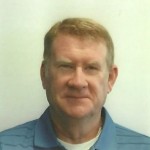
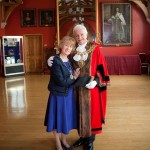

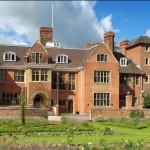
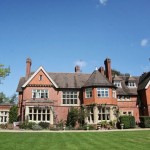
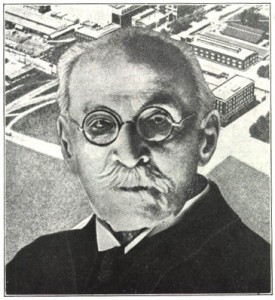
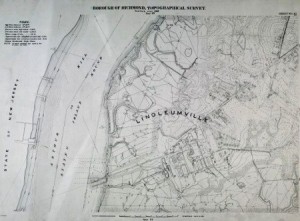
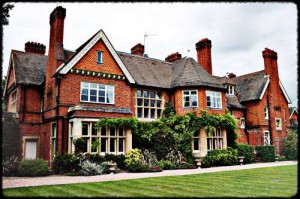
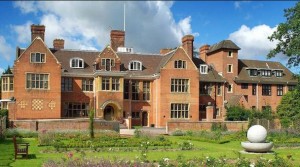
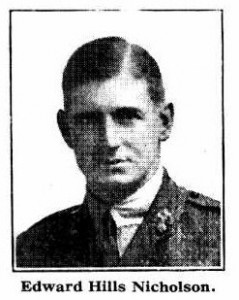
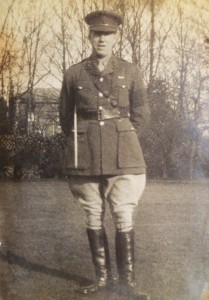
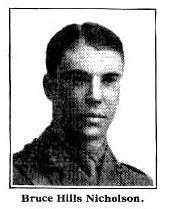
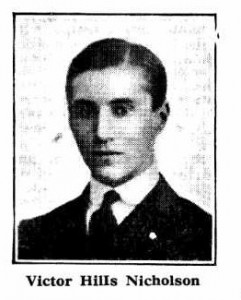
Was David Nicholson who was a superintendent in Broadmoor mental health hospital in the 1890 or later any relation.
Was David Nicholson who was a superintendent in Broadmoor mental health hospital in the 1890 or later any relation?